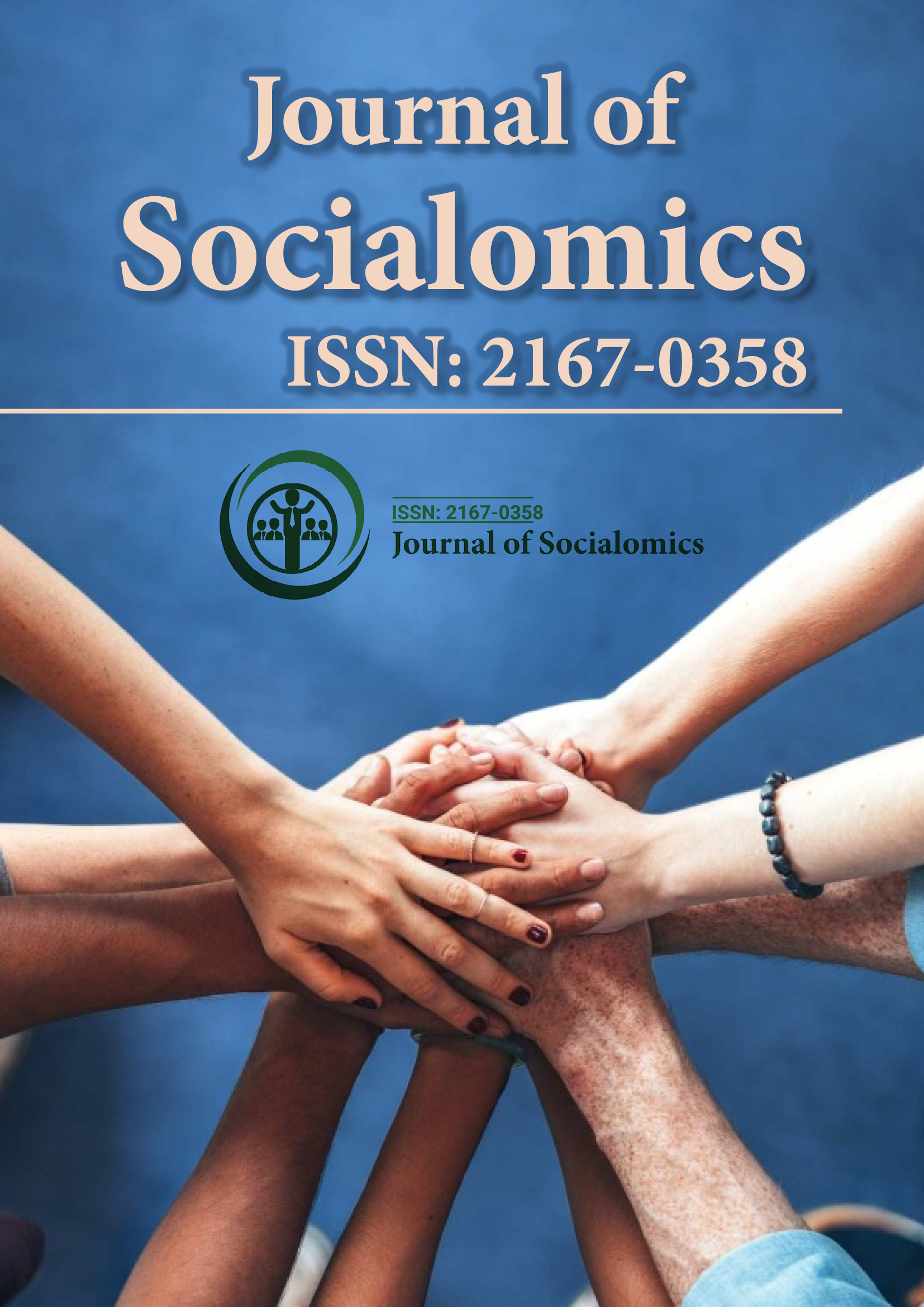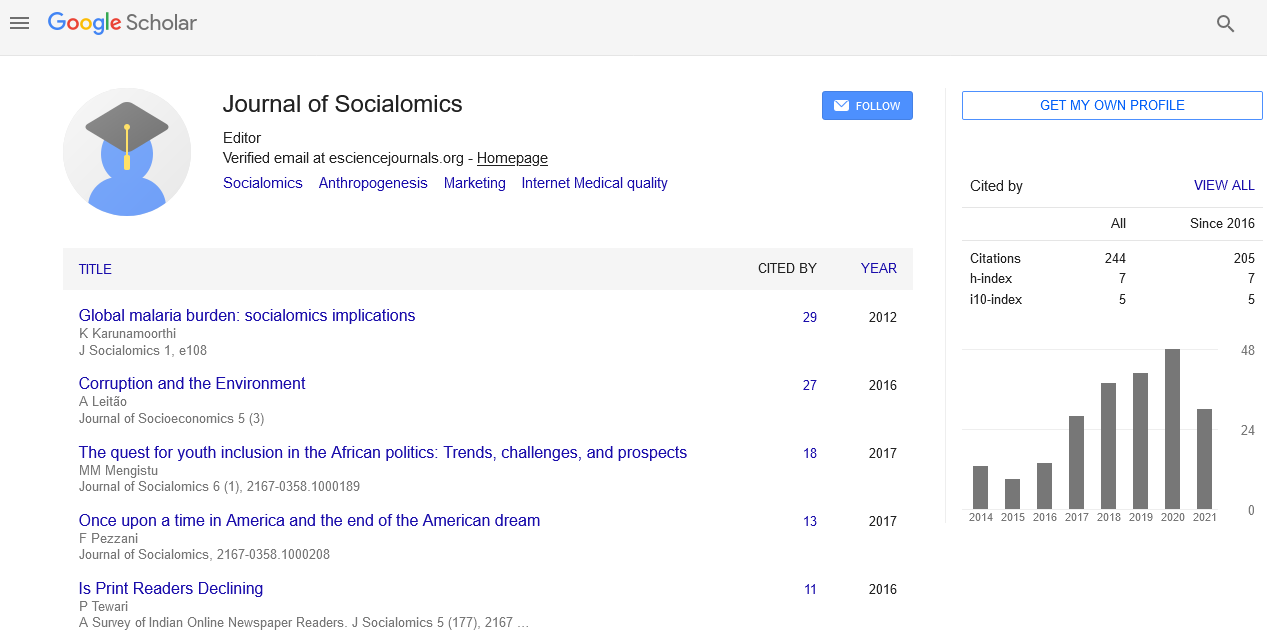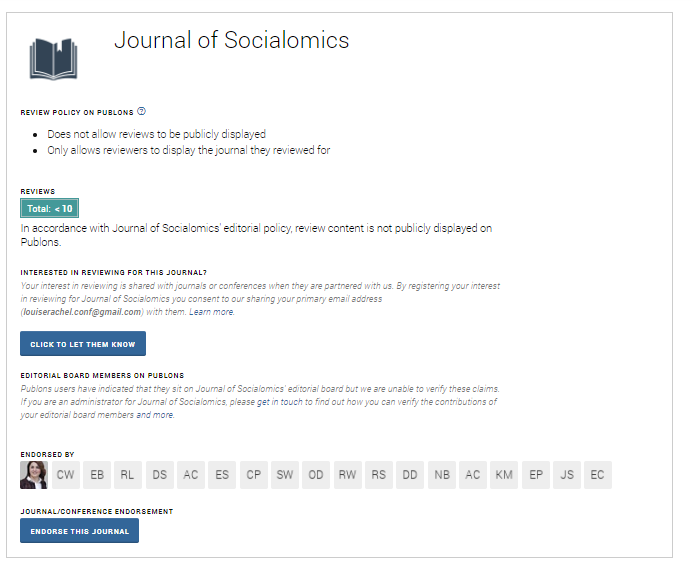Indexed In
- Open J Gate
- Genamics JournalSeek
- SafetyLit
- RefSeek
- Hamdard University
- EBSCO A-Z
- OCLC- WorldCat
- Publons
- Google Scholar
Useful Links
Share This Page
Journal Flyer

Open Access Journals
- Agri and Aquaculture
- Biochemistry
- Bioinformatics & Systems Biology
- Business & Management
- Chemistry
- Clinical Sciences
- Engineering
- Food & Nutrition
- General Science
- Genetics & Molecular Biology
- Immunology & Microbiology
- Medical Sciences
- Neuroscience & Psychology
- Nursing & Health Care
- Pharmaceutical Sciences
Perspective - (2025) Volume 14, Issue 2
Perceptions of Fairness in Digital Labor Platforms
Marcus Linfield*Received: 26-May-2025, Manuscript No. JSC-25-29729; Editor assigned: 28-May-2025, Pre QC No. JSC-25-29729; Reviewed: 11-Jun-2025, QC No. JSC-25-29729; Revised: 18-Jun-2025, Manuscript No. JSC-25-29729; Published: 25-Jun-2025, DOI: 10.35248/2167-0358.25.14.274
Description
The rise of gig-based employment has brought with it new conversations around fairness, control, and compensation in digital labor markets. Platforms that facilitate freelance or ondemand work often present themselves as neutral intermediaries, connecting clients with workers and offering a level of flexibility not found in traditional employment models. However, the structure and algorithmic governance of these platforms have a significant effect on how workers perceive fairness in terms of both process and outcome. These perceptions can shape satisfaction, motivation, and long-term engagement with the platform.
One of the most commonly cited factors influencing perceptions of fairness is the lack of transparency around task allocation and performance evaluation. Workers frequently report confusion or dissatisfaction with how jobs are distributed, how ratings are calculated, and how account restrictions or bans are enforced. Since these decisions are often made by automated systems or low-level support staff with limited discretion, workers feel a disconnect between their performance and the consequences they face. This disconnect can foster a sense of instability and erode trust, especially when workers believe their livelihoods are vulnerable to arbitrary decisions.
Another layer that affects perceptions of fairness is compensation structure. Many platforms emphasize flexibility and self-management, but in practice, workers are bound by fluctuating pay rates, inconsistent availability of jobs, and hidden fees. Unlike traditional employment, where compensation is negotiated and regulated, gig workers must accept terms unilaterally, often under pressure to act quickly or lose opportunities. When rates drop or when the platform changes policies without consultation, workers are left with few avenues to express dissent or seek adjustments. This one-sided arrangement contributes to a feeling of imbalance, where the platform holds all decision-making power, and workers are expected to adapt without input.
Worker-to-worker dynamics also contribute to the perception of fairness, particularly when it comes to competition and rating systems. Many platforms rely on customer feedback and peer ratings as a central part of their evaluation model. While this may initially seem democratic, in practice it creates pressure to please clients at all costs and discourages honest feedback. A single negative rating, even if undeserved, can have a lasting impact on a worker’s visibility or eligibility for high-paying tasks. Some workers also engage in strategic behaviors such as rating inflation or even sabotage to maintain their standing, further complicating the fairness landscape. These informal behaviors point to a lack of trust in the formal mechanisms provided by the platform.
Social comparison also plays a role in how fairness is perceived. When workers see others succeeding or receiving more opportunities despite similar inputs, it can lead to dissatisfaction and demoralization. These comparisons are often based on incomplete information, but the perceived inequality is enough to influence behavior and attitudes. In forums and online groups where workers share experiences, stories of unfair treatment or inconsistent enforcement are common. These shared narratives create a collective consciousness that informs how individuals interpret their own experiences, often reinforcing skepticism toward the platform’s integrity.
Communication practices are another significant factor. Many platforms limit communication between workers and support teams, using templated responses or automated replies. This lack of personal engagement can make workers feel unheard and disposable. When problems arise, whether technical or interpersonal, the absence of responsive support contributes to a sense of helplessness. Workers often turn to external communities for advice or venting, but these are unofficial and cannot solve systemic issues. The combination of low responsiveness and algorithmic oversight leaves workers with limited recourse, which undermines any remaining confidence in the platform’s fairness.
Conclusion
As digital labor continues to grow, understanding how fairness is interpreted by those doing the work is essential. While the technical infrastructure may be efficient, the human experience on the other side of the screen is shaped by much more than code. Trust, communication, and transparency remain vital for long-term engagement and satisfaction. Platforms that ignore these elements may face growing resistance, reduced loyalty, and negative public perception. Addressing fairness requires more than policy it requires a genuine consideration of the worker’s voice in systems built largely without their input.
Citation: Linfield M (2025). Perceptions of Fairness in Digital Labor Platforms. J Socialomics. 14:274.
Copyright: © 2025 Linfield M. This is an open-access article distributed under the terms of the Creative Commons Attribution License, which permits unrestricted use, distribution and reproduction in any medium, provided the original author and source are credited.


